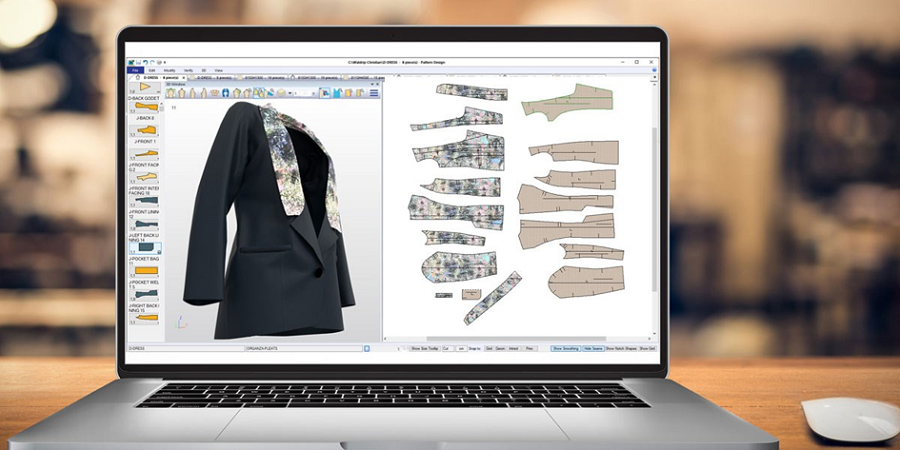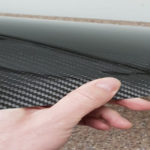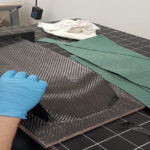- January 26, 2022
- No Comment
- 65
Synthetic Fibers Classification, Properties and Applications

Introduction:
Synthetic fibres result from extensive research conducted to enhance the properties of natural animal and vegetable fibres. Synthetic fibres are created by extrusion of a polymeric substance that is synthetic in origin, through a spinneret to air or water. The fibre-forming polymers are usually derived from petrochemicals. This is why these fibres are known as synthetic fibres.
There are various kinds of synthetic fibres that have been incorporated into recent research networks about their extraordinary characteristics. There are many contemporary fabrics, including velvet, weave cotton printed cotton, calico silk, satin, felt, Hessian, polycotton. Synthetic textiles are used mostly in the manufacture of clothing. Polyester fibre is utilized in all sorts of clothing, whether it is used alone or in combination with other fibres like cotton. The Aramid fibre (e.g., Twaron) is utilized for flame-resistant clothing or cut-protection as well as armour.
Acrylic is a type of fibre that is used to mimic wools, including cashmere. It is commonly utilized to replace these. Nylon is a type of fibre that is used to mimic silk and it is employed in the manufacture of pants. Fibres made of nylon are utilized in ropes and outdoor clothes. Spandex (trade brand name Lycra) is polyurethane fibre that can stretch easily and is fit-to-size without hindering movement. It is used in the production of swimming suits and activewear. Olefin fibre can be described as a type of fibre that is used in activewear, linings as well as warm clothes. Olefins are water-resistant, which allows them to dry quickly.
The sintered felt made of olefin fibres can be purchased as Tyvek. Ingeo is a polylactide fibre that is blended with other fibres like cotton and utilized in clothes. It’s more hydrophilic than many other synthetics, which allows it to absorb sweat. Lurex is a steel fibre utilized in the design of clothing. In this article, I will examine different synthetic fibres, their properties and their applications.
Synthetic Fibers made from Inorganic Fibers:
Boron Fiber:
Boron fibre is produced by chemical vapour deposition using single-filament reactors. It is an unbeatable combination of high compressive power, high modulus and a wide diameter. If compared with carbon fibre-based composites has superior compression properties. Elemental boron is made in sizes between 4.0 millimetres (102-micron) as well as 5.6 millimetres (102-micron) using a thin layer of tungsten (142-micron). Amorphous boron that has a completely bonded tungsten core is the outcome.
The physical properties of the boron fibre
- Tensile Strength = 520 KSI (3600 MPa)
- Tensile Modulus = 58 MSI (400 GPa)
- Compression Strength = ~1000 ksi (6900 MPa)
- COTE = 2.5 PPM/degF (4.5 PPM/degC)
- Density is 0.093 lb./in3 (2.57 G/cm3)
Benefits of boron fibre
One of the most frequent uses of boron fibres is the production of high-tensile strength tapes. Boron fibres result in light, high-strength materials, which are used primarily in advanced aerospace structures as a component in composite materials, in addition to limited production sports and consumer items like fishing rods and golf clubs.
One of the main uses for the boron fibre composites was in the vertical tail surfaces of the F-14 Tomcat fighter. The reason for this was that carbon fibre composites weren’t yet advanced enough to where they could be utilized and were used in a variety of aircraft designs before.
Glass Fiber
The bundle contains glass fibres. Glassmakers through history have tried their hand at glass fibres, however, the manufacturing in mass quantities from glass fibre was created by the development of more refined machine tools. It was in 1893 that Edward Drummond Libbey exhibited his gown within the World’s Columbian Exposition incorporating glass fibres with the dimensions in addition to the feel of silk fibre.
Forms and types of fibreglass:
Based on the raw materials and the proportions they are used to create fibreglass, the product is classified into the following principal kinds:
- A-glass is also known as an alkali glass and is impervious to chemical corrosive substances. Because of the composition of glass fibre, It is similar to the glass that is used for windows. In certain regions around the globe, it’s used in the manufacture of process equipment.
- C-glass is excellently resistant to chemical impacts and is often referred to as chemical glass.
- E-glass is known as an electrical glass and is a great conductor of electricity.
- A-glass: This is resistant to alkali.
- S glass is Also known as structural glass and is famous for its properties in the field of mechanical.
Glass fibre uses:
- Beverage industry
- Car washes
- Chemical industry
- Cooling towers
- Marinas and docks
- Food processing
- Aquariums and fountains
- Manufacturing
- Mining and metals
- Power generation
- Plants for plating
- Paper and pulp industry
- Automotive industry
- Aerospace and Defense
Carbon Fiber
Carbon fibres (alternatively CF, graphite fibre or graphite fibre) are fibres that adjust from 5-10 millimetres (0.00020-0.00039 in) in diameter. They are composed mostly of carbon molecules. Carbon fibres offer several advantages, including high stiffness and strength. They also have high tensile strength and low weight to strength ratio, as well as high chemical resistance and high-temperature tolerance, as well as the ability to withstand thermal contraction at a low rate. These characteristics have created carbon fibre highly sought-after in civil engineering, aerospace military, motorsports, civil engineering and other competitive sports. However, they’re expensive when compared to similar fibres like basalt fibres, glass fibres as well as plastic fibres.
Physical characteristics of carbon fibre
- Tenacity is 1.7 1.85 mpa – 1.85 MPA
- Density is 1.75 + 1.96 gm/cc
- Break in the length range = 0.3 1.8% 1.8 percent
- Moisture regain = 0%
- Melting point = 3650-3700degC
- Glass transition temp is 250 degC.
- LOI is 18.3 – 31.5 per cent
Carbon fibre uses
- Aeronautical industry
- Automobile industry
- The industry of sports
- Civil Engineering
- Medical field
- Power plant
- Audio equipment
- Prosthetic surgery
- Textile machinery
- Other applications include aeroplanes, missiles telescopes, missiles, etc.
Ceramic Fiber:
Ceramic Fiber is a human-made synthetic fibre made from small-sized filaments made up of high purity Aluminosilicate material. It is also referred to as ‘Ceramic Wool’, or “refractory substance”. Because it is the property of being heat-resistant white, and also non-odourless.
Physical characteristics of ceramic fibre:
- Tenacity is 3 GPA.
- Density is 3.9 Gm/cc
- Melting point = 1790 degree Celsius
- Initial modulus = 210 GPA
Carbon fibre uses
- High temperatures insulation gaskets and seals.
- Thermal shield.
- Fire barrier.
- Fire Retardant Fabric.
- Blankets for protection, as well as wrapping.
- Fabric for expansion joints and safety clothing.
- Electrical insulation.
- Composite reinforcement.
- Sealing and insulation
Advantages and disadvantages of synthetic fibres
Advantages:
- Long-lasting
- Make sure you can pick up various dyes
- Stretchable
- Waterproofing
- Non-biodegradability
- Moisture resistance
- Wear resistance and wear
Disadvantages:
- Flammable
- Prone to heat-related cause damage
- Melt easily
- Not eco-friendly
- The microplastics that cause pollution
- Not recommended for a hot wash.
- Poor insulation capacity








